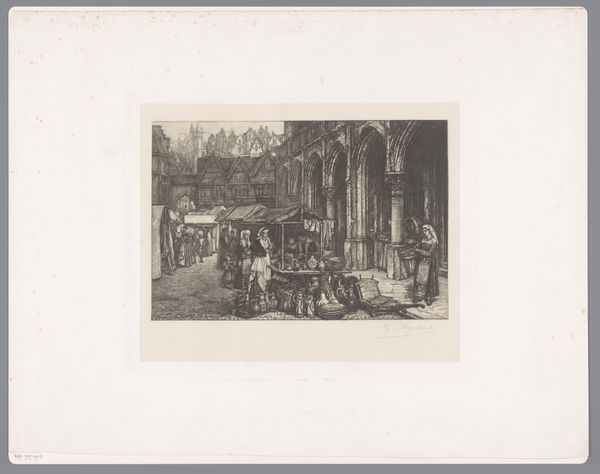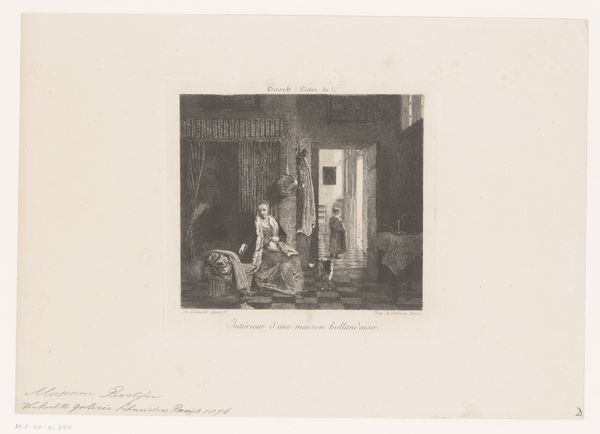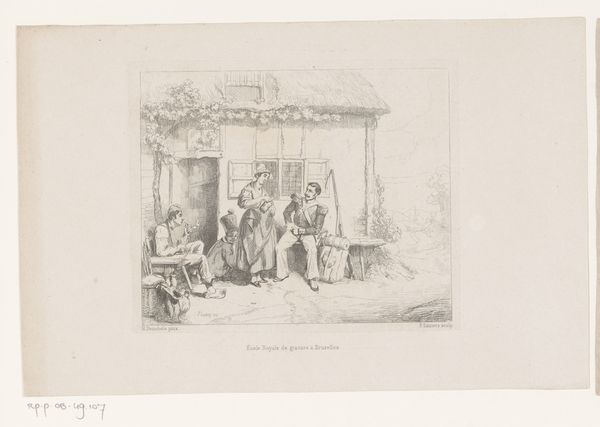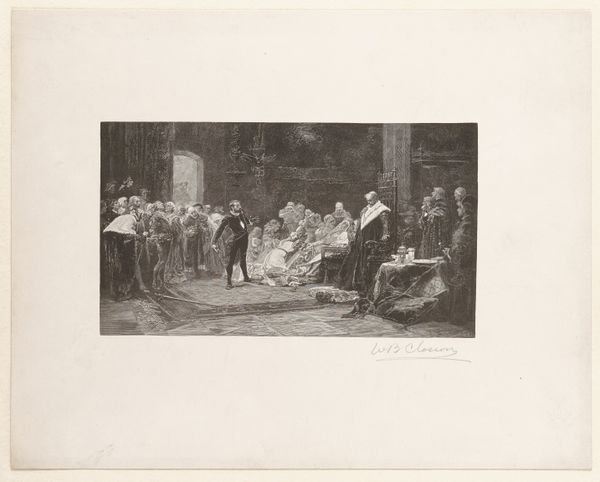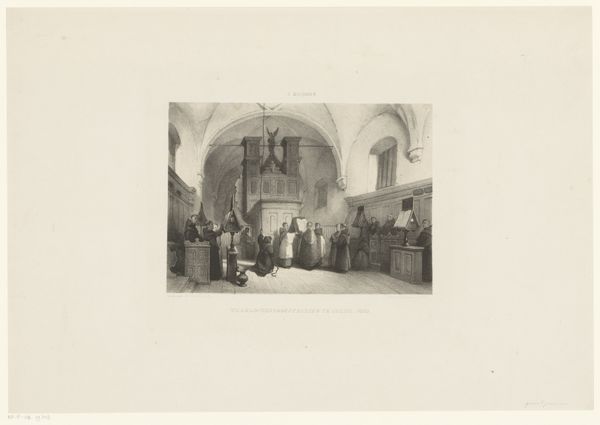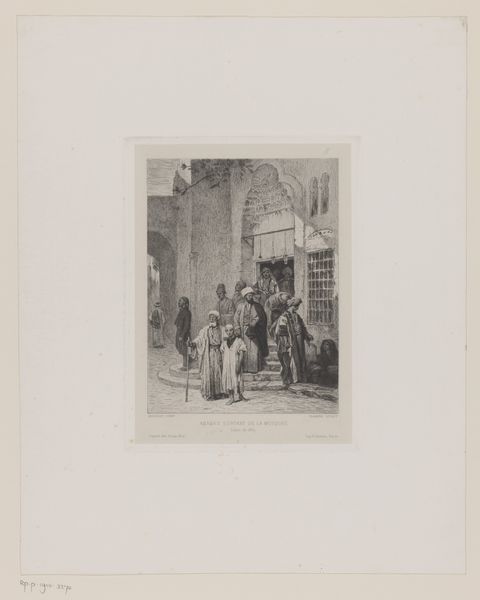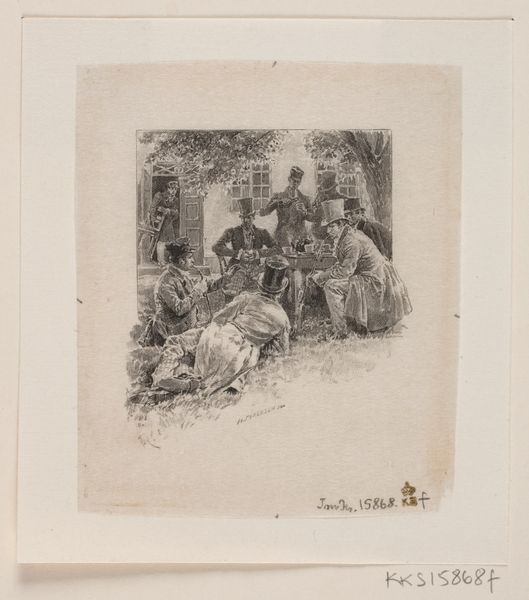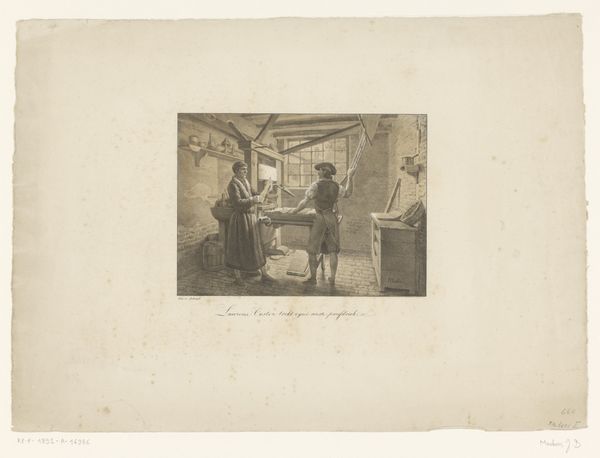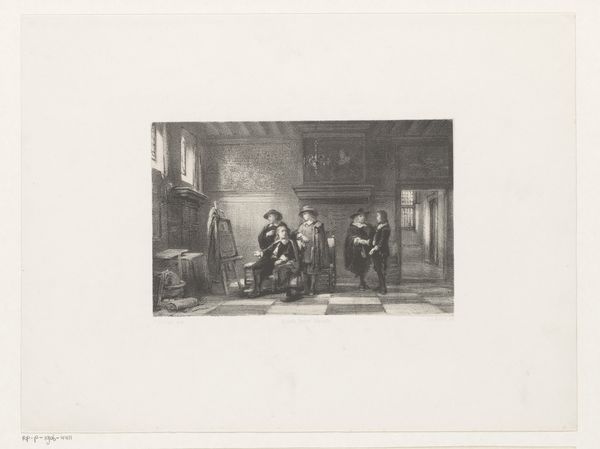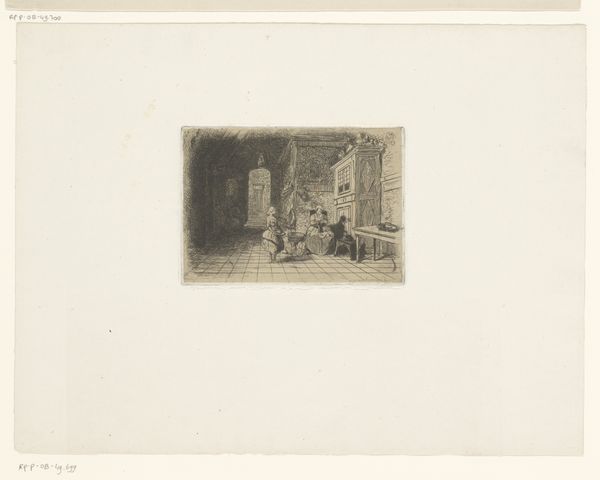
Dimensions: height 118 mm, width 145 mm
Copyright: Rijks Museum: Open Domain
Curator: Here we have Adolphe Lalauze’s etching, "Verloren Zoon," created sometime between 1848 and 1875. The medium is listed as both drawing and print which is to be expected for an etching. Editor: It has such a narrative quality, doesn't it? The interior scene feels staged, but intimate too. The figures around the table seem posed in an almost theatrical tableau. Curator: The title translates to “The Prodigal Son”, and given its themes of familial forgiveness, it speaks to archetypal stories we carry across cultures. See how Lalauze leans into that symbolic language; it's almost theatrical! Editor: Exactly! There is this monkey or dog on a leash. This lends an air of moral critique common for the genre painting this clearly wants to emulate. Do you agree this is mannerist in its stylistic affectations, drawing inspiration from older forms of moral and historical dramas? Curator: The Mannerist style really does allow the narrative to embrace heightened emotions and symbolism, particularly that central figure - so clearly burdened - as he enters this chaotic, seemingly opulent interior. His presence creates a tension in the domestic space, which in turn generates dramatic narrative expectation. Editor: It prompts thoughts on how domestic spaces have long reflected social expectations and even moral lessons within the home. I find myself reflecting on the idea of "genre painting" itself and its own kind of moral and class instruction that runs deep into the 19th Century and the cultural establishment Lalauze himself inhabited. Curator: Right! We might even question if Lalauze, who seems to invoke the story, does so in a self-conscious moment, and if this self-consciousness might actually make his image subversive. In its details, the viewer is challenged to look closely and come up with their own ideas! Editor: Looking closely, it does reveal layer upon layer of intention – a potent reminder that what we display says much about who we aspire to be as individuals, and as a society, right? It also suggests some awareness from the author about how to create moral commentary, using established approaches. Curator: Definitely. This drawing encourages an excavation of both its surfaces and deeper meanings that linger, informing its initial making and informing its audience centuries on. Editor: Agreed, a layered narrative etched in lines. A worthwhile stop today.
Comments
No comments
Be the first to comment and join the conversation on the ultimate creative platform.
